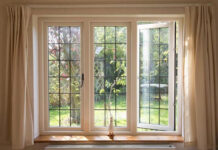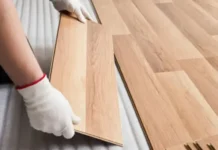More than 50 million people in the US deal with allergies each year. Allergic rhinitis, or “hay fever,” is one of the most common in adults. Skin allergies, such as atopic and contact dermatitis, are also quite common.
In fact, researchers found that up to 41% of US adults report having skin allergies.
With that said, you may be allergic to bedding (or anything in it) if you always wake up feeling itchy. The same goes if you greet your mornings with a runny nose and sneezing fits.
In that case, it’s high time you switch to hypoallergenic bedding.
If you’re on the fence about the effectiveness of these fabrics, don’t worry, as we’re here to quell your doubts. Read on to learn how the best hypoallergenic sheets and covers can help ease your allergies.
Lower Risks of Triggering Allergic Reactions
Allergies result from exposure to allergens or irritants. Allergens are substances that the immune system mistakes as “harmful.” It’s “erroneous” because these substances aren’t usually dangerous to other people.
For example, of the 3,700 known contact allergens, many are otherwise safe for most folks. These include pigments used to color or dye fabrics. They’re okay for most people, but they can trigger reactions in those with skin allergies.
Hypoallergenic bedding can help lower such risks, as they should have fewer allergens. In fact, that’s the very definition of the word “hypoallergenic.”
After all, the term “hypo” means “having very little.” So, combined with “allergenic,” it means having lower risks of causing allergies.
For example, some of the best hypoallergenic pillowcases and bedsheets don’t use pigments. Instead, they remain undyed, so they also retain the natural color of the fabric material.
In most other cases, textile makers use natural dyes, such as those from fruits or flowers. Studies found that some of their sources, like pomegranate rind, have anti-bacterial effects. Turmeric, peppermint, and mangosteen rinds are other examples of natural pigments.
Bye-Bye Dust Mites
Dust mites are microscopic creatures known to induce allergic reactions. They feed on shed skin, and they love warm, humid environments. That’s why they thrive in mattresses and bedding materials.
Hypoallergenic bedding provides a tight barrier against these critters. Indeed, researchers found that these allergen-proof bed covers can help reduce dust mites.
For instance, some of the best hypoallergenic bedding use extremely tight weaves. Others may also have impermeable backing that closes off gaps within the threads. This construction then creates a seal that inhibits the passage of dust mites.
A good example of tightly-woven bedding is a high-quality microfiber sheet set. Microfibers have exceptionally high thread density that also acts as an allergen filter. Their tight weaves keep allergens, including dust mites, out of bed.
Moreover, the higher thread count of microfibers makes them very soft and luxurious. In fact, the highest quality ones are even finer than more expensive silk. So, not only are microfiber bed covers hypoallergenic, but they’re also very comfortable.
Protection Against Icky, Sneeze-Inducing Mold
Some experts believe that 40% of asthma attacks in the US are due to mold exposure. They also say that long term mold exposure may raise one’s risk of developing allergy or asthma.
The thing is, molds are everywhere, and they can thrive in mattresses and pillows. Just like dust mites, these microorganisms also love warm and humid environments. If you sweat a lot in your sleep, it won’t take long for fungi to grow in and on your bed.
Some types of bedding are hypoallergenic in that they can resist mold and mildew spores. Good examples are bamboo and hemp textile, which are breathable and moisture-wicking. This combination helps you stay cool in the summer and warms you up in the winter.
Moreover, scientists say hemp fibers also have innate antibacterial properties. Now, keep in mind that some species of bacteria can encourage or worsen allergies. So, in this way, such bed covers and sheets may serve dual hypoallergenic effects.
Fewer Allergens, Better-Quality Sleep
Some allergy symptoms tend to worsen at night, especially nasal congestion. Sleeping on non-hypoallergenic bedding can also further cause skin irritation. Either way, all these immune reactions can interfere with your sleep.
Unfortunately, it can get so horrible that you may experience insomnia. Even if you do fall asleep, all those irritants around you can keep “nudging” you. This is also one of the chief reasons 26% of people with allergies say they often wake up due to allergy symptoms.
Over time, your allergy-related sleep issues can make your “sleep debt” pile up. This can then cause chronic sleep deficiency, which is bad not only for your skin but your overall health. Lack of sleep can also interfere with your cognitive and mental functions.
More than that, sleep debt can mess with your concentration throughout the day. If you drive, this can put your focus at risk, heightening your odds of driving errors. This is a serious issue, seeing as an estimated 100,000 road crashes occur each year due to drowsy drivers.
At the very least, you wouldn’t want to keep waking up on the wrong side of the bed. That’s why as early as now, consider making the switch to hypoallergenic bedding.
However, make sure you also implement proper allergen avoidance. This includes washing your sheets and vacuuming your home more often. Keeping your home’s humidity levels between 25% and 60% can also help keep allergens, like molds, at bay.
Rest Easy and Sleep Better With Hypoallergenic Bedding
There you have it, all the top reasons you should invest in hypoallergenic bedding. They can help reduce sneezing fits, keep you comfy at night, and even boost your sleep quality. Even if you don’t have allergies, them being soft and breathable can help you get more restful ZZZs.
Ready for more educational health and lifestyle insights like this? Feel free to browse our site’s many other news and blog posts then!



































































